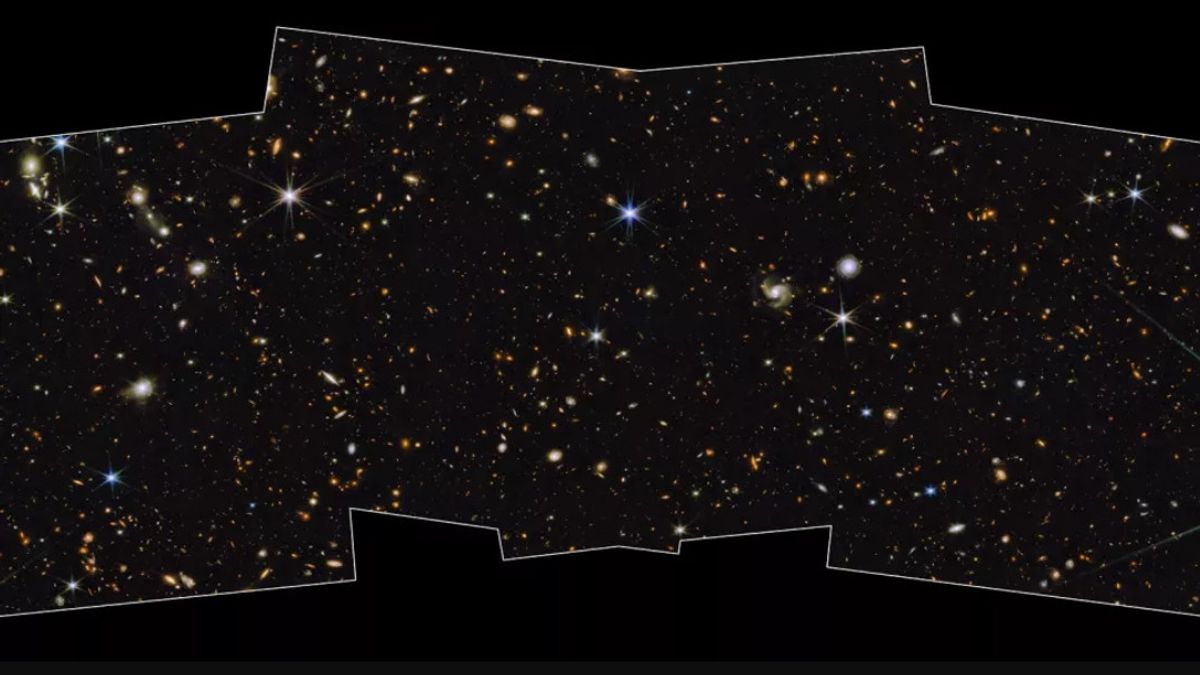JAKARTA - The James Webb Space Telescope (JWST) is showing off again by displaying galaxies that were previously unseen in an area of the sky called the North Ecliptic Pole.
The galaxy was revealed thanks to researchers from the Prime Extragalactic Areas for Reionization and Lensing Science (PEARLS) Program, they also shed light on a number of interacting galaxies.
Researchers say you can see thousands of galaxies in the image, including some very distant galaxies, captured by the Webb's Near-Infrared Camera, or NIRCam, and the Hubble Space Telescope's Advanced Camera. This is only part of the PEARLS survey, but the results are surprising.
“The Webb Telescope images are absolutely phenomenal, completely beyond my wildest dreams. They allow us to measure the density of the number of galaxies shining down to the very faint infrared limit and the total amount of light they produce," said lead author of the study, Rogier Windhorst of Arizona State University in a statement.
"This glow is much fainter than the very dark infrared skies measured between the galaxies."
Cited from Space, Wednesday, December 21, the location of the North Ecliptic Pole can also be monitored at any time of the year and is not blocked by the Sun when the Webb Telescope is orbiting.
The telescope can also see what appears in the sky, a promising opportunity for other researchers focused on how objects change over time.
"Such monitoring will enable the discovery of time variable objects such as distant exploding supernovae and bright accretion gas around black holes in active galaxies, which should be detectable at greater distances than before," said astronomer Anton Koekemoer at STScI, which operates JWST, and members of the PEARLS team.
SEE ALSO:
The PEARLS program focuses on the gravitational lensing of objects in the background galaxy clusters and those so massive that they warp space-time, magnifying the light from objects behind them.
Some of the highlights studied by PEARLS include an accretion disk forming around a supermassive black hole at the center of a galaxy, and a pair of overlapping galaxies called the VV 191 galaxy system.
Then there are some very old galaxies with very high redshifts, i.e. light that has traveled for nearly 13.5 billion years.
“I was blown away by the first PEARLS image. Little did I know, when I select this field near the North Ecliptic Pole, it will yield a treasure trove of distant galaxies, and that we will get direct clues about the processes of galactic formation and growth," said co-author Rolf Jansen.
"I can see streams, tails, shells, and halos of stars on the periphery, remnants of the material they were made of," he added.
The English, Chinese, Japanese, Arabic, and French versions are automatically generated by the AI. So there may still be inaccuracies in translating, please always see Indonesian as our main language. (system supported by DigitalSiber.id)


















